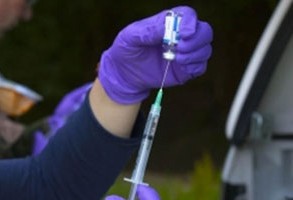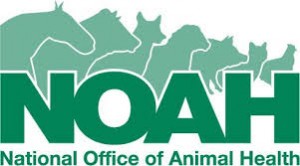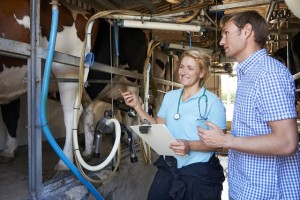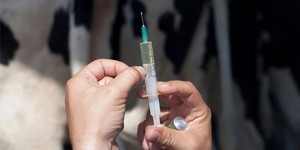Vaccination, also known as immunisation, is a means to create immunity and prevent disease. Vaccines should be used as a part of a disease prevention programme that also addresses the environmental and management factors on the farm. Deciding on whether or not to vaccinate your animals depends on your farming system and is something that should be outlined in your Animal Health Plan.
Vaccines provide protection to some infectious diseases and are achieved by active or passive immunisation.
Active Immunisation
Active immunisation is achieved by an injection containing microbial pathogens that induce immunity but do not cause disease, or with antigenic components from pathogens . The aim of active immunisation is to provide protective immunity and create immunologic memory, then when the animal is exposed to a pathogen subsequently, it will produce a heightened immune response that prevents disease.
Passive Immunisation

Passive immunisation involves the transfer of preformed antibodies, such as the transfer of maternal antibodies across the placenta or though colostrum, or from one animal to another. Passive immunisation is usually used as an antitoxin to alleviate conditions or provide transient immunity (short-term protection) and is achieved by injecting a recipient animal with preformed antibodies It is usually given in the case of spider or snake bites where the preformed antibodies ameliorate the toxin from the venomous bite.
Attenuated Vaccines
These are vaccine that contains organisms that have been weakened so they lose their pathogenicity , but retain their ability to provoke an immune response. Attenuated vaccines generally require one dose as they induce long-lasting immunity.
Inactivated Vaccines
Pathogens can be inactivated by heat, chemicals or irradiation so that they are no longer able to replicate inside the host. These vaccines often require boosters to maintain immunity but are easier to produce than live-attenuated vaccines.
Purified Proteins as Vaccines
Some vaccines are made up of either monoclonal antibodies or protein molecules that have been extracted from pathogens or the exotoxins they produce, but few of these are used in farm animal health.
 To find out more visit the National Office of Animal Health (NOAH) Vaccination of Farm Animals page.
To find out more visit the National Office of Animal Health (NOAH) Vaccination of Farm Animals page.
Several factors must be taken into account when using a vaccine, the main points of which have been highlighted below:
- All vaccinating should be carried out by adequately trained staff
- Always read the datasheet before administering any vaccine
- Ensure all vaccine are stored correctly – live vaccines must be kept cool
- Only use vaccines in date
- Ensure correct site of administration – The data sheet will recommend the site of administrations (i.e. neck, caudal fold, ear etc. ) and this must be followed
- Ensure the correct mode of administration – some vaccines are to be given intra-muscular, others subcutaneously, or in drinking water (poultry)
- Record all vaccinations in the animal medicine book
Responsible Use of Medicines in Agriculture has produced a series of detailed guidelines for vaccinating farm animals, categorised by species. The full list can be found here: http://www.ruma.org.uk/vaccines/
There are vaccines available for the following cattle diseases, however emphasis should be placed on management and husbandry factors to prevent disease and not necessarily the routine use of vaccines – visit the specific pages to find out more:
- Bovine Viral Diarrhoea (BVD)
- Clostridial Disease
- Colibacillosis
- Cryptospirosis
- Infectious Bovine Rhinotracheitis (IBR)
- Leptospirosis
- Lungworm (Dictyocaulus viviparous)
- Mastitis – only against 2 specific bacteria
- Pastuerellosis
- Respiratory Syncytial Virus (Calf Pneumonia)
- Rotavirus and Coronavirus
- Ringworm
- Salmonellosis


 American English
American English



Comments are closed.